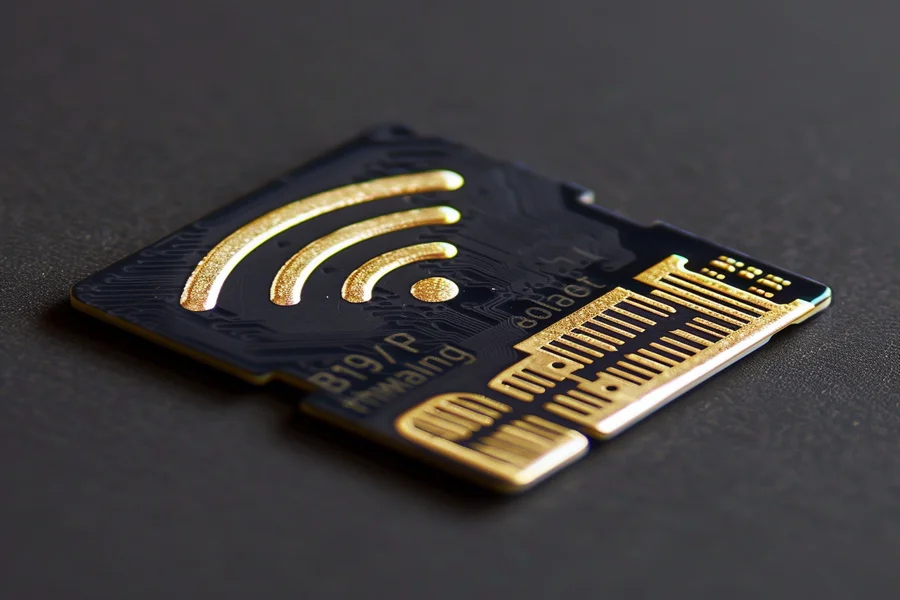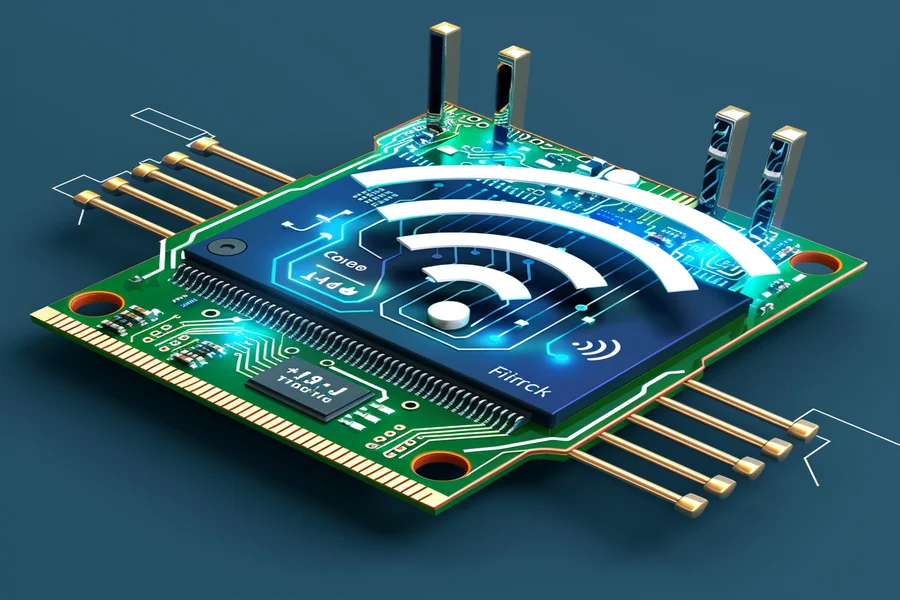The demand for high-speed internet connectivity is skyrocketing, with projections indicating the WiFi card market will surpass USD 3.6 billion by the end of 2024. As businesses gear up for 2025, selecting the right WiFi cards becomes crucial for staying competitive in a connected world. This article delves into the key factors and latest innovations driving the market, helping business buyers make informed decisions.
Table of Contents:
– Global Market Overview of Wifi Cards
– Detailed Analysis of the Wifi Card Market
– Key Factors When Selecting WiFi Cards for Connectivity
– Latest Technology Features in WiFi Cards
– Environmental and Durability Considerations
– Future-Proofing and Upgrade Potential
– Wrapping Up
Global Market Overview of Wifi Cards

The global market for Wifi cards is projected to see substantial growth through 2025 and beyond. Recent data indicates the market size will reach approximately USD 3.6 billion by the end of 2024. This growth is driven by increasing demand for high-speed internet connectivity across residential, commercial, and industrial sectors. The proliferation of connected devices, such as smart home systems and IoT devices, further fuels the demand for advanced Wifi cards.
North America continues to dominate the market, accounting for nearly 35% of the global share in 2024. The Asia-Pacific region is also experiencing rapid growth, with an estimated CAGR of 12.5% from 2024 to 2028. This surge is attributed to the expanding consumer electronics market and the growing adoption of smart technologies in countries like China, India, and Japan. Europe follows closely, driven by the rising trend of smart homes and the implementation of 5G infrastructure.
Technological advancements such as Wi-Fi 6 and Wi-Fi 6E are expected to play a significant role in market expansion. These innovations offer enhanced speed, improved network efficiency, and lower latency, making them highly desirable for both consumers and enterprises. The deployment of these advanced Wifi cards is anticipated to significantly contribute to overall market growth in the coming years.
Detailed Analysis of the Wifi Card Market

Key Performance Benchmarks
Wifi cards are evaluated based on data transfer rates, frequency bands, and range. The latest Wifi cards, such as those supporting Wi-Fi 6, offer data transfer rates up to 9.6 Gbps, a significant improvement over Wi-Fi 5’s maximum speed of 3.5 Gbps. Additionally, Wifi 6 cards operate on both 2.4 GHz and 5 GHz frequency bands, providing better flexibility and reduced interference.
Market Share Dynamics and Economic Influences
Market share dynamics are influenced by major players such as Intel, Qualcomm, and Broadcom. These companies invest heavily in research and development to introduce advanced products and maintain their competitive edge. Economic factors such as rising disposable incomes and increasing internet penetration also boost the demand for Wifi cards. For instance, the average broadband connection speed worldwide is estimated to reach 49.53 kbit/s by 2024, driving the need for high-performance Wifi cards.
Innovations and Product Lifecycle Stages
Recent innovations include the introduction of Wifi 6E cards, which operate in the 6 GHz band, offering additional channels and less congestion. These cards are particularly beneficial in environments with a high density of devices. The product lifecycle of Wifi cards typically involves stages from introduction and growth to maturity and decline. Currently, Wifi 6 cards are in the growth stage, while older technologies like Wi-Fi 4 are in the decline stage.
Customer Preferences and Distribution Channels
Customers increasingly seek Wifi cards with robust security features, compatibility with multiple devices, and seamless connectivity. The penetration of smart home devices and the growing trend of remote work influence consumer preferences. Distribution channels for Wifi cards include both online and offline platforms, with a noticeable shift towards e-commerce due to its convenience and wider reach.
Environmental Regulations and Social Trends
Environmental regulations prompt manufacturers to develop energy-efficient Wifi cards. Additionally, there is a growing consumer preference for sustainable products. Social trends such as the rise of smart homes and connected cars drive the demand for advanced Wifi cards, highlighting the importance of reliable and high-speed connectivity in modern lifestyles.
Brand Positioning and Differentiation Strategies
Brands position themselves by emphasizing innovation, reliability, and customer support. Differentiation strategies include offering extended warranties, superior customer service, and exclusive features such as advanced security protocols. Niche markets, such as gaming and industrial applications, are targeted with specialized products catering to specific needs.
In conclusion, the Wifi card market is poised for significant growth, driven by technological advancements, rising consumer demand, and favorable economic conditions. Companies focusing on innovation, customer preferences, and sustainability are likely to lead the way.
Key Factors When Selecting WiFi Cards for Connectivity

When choosing the right WiFi card for connectivity, several critical factors should be considered. Each factor plays a pivotal role in ensuring the WiFi card meets your specific needs and provides optimal performance. Below are key aspects to evaluate:
Compatibility with Devices and Systems
One of the primary considerations when selecting a WiFi card is its compatibility with your existing devices and systems. Not every WiFi card is universally compatible, so it’s essential to ensure that the card you choose will work seamlessly with your hardware and operating system.
- Operating System Compatibility: Verify that the WiFi card supports the operating system on your device, whether it’s Windows, macOS, or Linux. Some cards may require specific drivers or software updates to function correctly.
- Hardware Compatibility: The WiFi card must be compatible with your device’s hardware specifications. Consider factors such as the form factor (e.g., PCIe, M.2, USB) and the available slots or ports on your device.
- Firmware and Driver Updates: Check if the manufacturer provides regular firmware and driver updates. These updates can enhance performance, security, and compatibility with new devices and technologies.
Performance Specifications
The performance of a WiFi card is critical for ensuring fast and reliable internet connectivity. Key performance specifications to evaluate include:
- Data Transfer Rates: Look for WiFi cards that support high data transfer rates. Modern WiFi standards like WiFi 6 (802.11ax) offer significantly higher speeds compared to older standards like WiFi 5 (802.11ac) or WiFi 4 (802.11n).
- Frequency Bands: Dual-band (2.4 GHz and 5 GHz) or tri-band (adding 6 GHz) WiFi cards provide better performance and flexibility. The 5 GHz and 6 GHz bands offer faster speeds and less interference compared to the 2.4 GHz band.
- MIMO Technology: Multiple Input Multiple Output (MIMO) technology allows multiple antennas to send and receive more data simultaneously, improving throughput and performance, especially in environments with multiple devices.
Security Features
Security is a paramount concern when it comes to wireless connectivity. Ensure the WiFi card you select includes robust security features to protect your network and data.
- Encryption Standards: Look for WiFi cards that support the latest encryption standards, such as WPA3. This provides stronger security compared to older standards like WPA2.
- Secure Boot and Firmware: Some advanced WiFi cards offer secure boot and firmware features that prevent unauthorized firmware updates and protect against malicious attacks.
- Network Monitoring and Management: Consider WiFi cards that come with software for network monitoring and management. This can help you detect and respond to security threats more effectively.
Ease of Use and Setup
The ease of use and setup is another crucial factor, especially for users who may not be tech-savvy. A WiFi card that is easy to install and configure can save time and reduce frustration.
- Plug-and-Play: Many modern WiFi cards offer plug-and-play functionality, allowing for quick and straightforward installation without the need for extensive configuration.
- User-Friendly Software: Look for WiFi cards that come with intuitive software interfaces for managing network settings, monitoring performance, and troubleshooting issues.
- Installation Guides and Support: Ensure that the manufacturer provides comprehensive installation guides and customer support. This can be particularly helpful if you encounter any issues during the setup process.
Price and Warranty
Lastly, consider the price and warranty of the WiFi card. While it’s essential to find a card that fits within your budget, it’s also important to ensure that you’re getting good value for your money.
- Price Range: WiFi cards vary widely in price, depending on their features and performance. Determine your budget and look for cards that offer the best balance of performance and cost.
- Warranty and Support: Check the warranty period and the type of support provided by the manufacturer. A longer warranty and robust customer support can provide peace of mind and protect your investment.
Latest Technology Features in WiFi Cards

The world of WiFi technology is continually evolving, with new advancements enhancing connectivity and performance. Here are some of the latest technology features to look for in WiFi cards:
WiFi 6 and WiFi 6E
WiFi 6 (802.11ax) and WiFi 6E are the latest standards in wireless technology, offering several improvements over previous generations.
- Higher Speeds: WiFi 6 can deliver speeds up to 9.6 Gbps, significantly higher than WiFi 5. This makes it ideal for bandwidth-intensive activities like 4K streaming and online gaming.
- Increased Capacity: WiFi 6 supports more simultaneous connections, making it suitable for environments with many devices, such as smart homes and offices.
- Reduced Latency: With features like Orthogonal Frequency Division Multiple Access (OFDMA) and Target Wake Time (TWT), WiFi 6 reduces latency, improving the responsiveness of applications.
MU-MIMO and Beamforming
Multi-user, Multiple Input, Multiple Output (MU-MIMO) and beamforming technologies enhance the efficiency and performance of WiFi networks.
- MU-MIMO: This technology allows multiple devices to communicate with the router simultaneously, reducing wait times and improving overall network performance.
- Beamforming: Beamforming focuses the WiFi signal directly to the receiving device, rather than broadcasting it in all directions. This enhances signal strength and reliability, particularly in larger spaces.
WPA3 Security
WPA3 is the latest WiFi security protocol, offering stronger protection for wireless networks.
- Enhanced Encryption: WPA3 uses stronger encryption algorithms, making it more difficult for attackers to crack the network.
- Improved Authentication: WPA3 simplifies the process of connecting devices to the network securely, with features like Simultaneous Authentication of Equals (SAE).
Environmental and Durability Considerations

When selecting a WiFi card, it’s essential to consider its durability and environmental impact. High-quality materials and robust construction can ensure longevity and reliability.
Build Quality and Materials
The build quality and materials used in a WiFi card can affect its performance and durability.
- Heat Dissipation: Look for WiFi cards with effective heat dissipation mechanisms, such as heatsinks or thermal pads. This helps maintain optimal performance and prevents overheating.
- Robust Construction: WiFi cards made from high-quality materials are more likely to withstand wear and tear, ensuring long-term reliability.
Energy Efficiency
Energy efficiency is an important consideration, particularly for devices that are used continuously.
- Power Consumption: Choose WiFi cards that are designed to be energy-efficient, reducing power consumption and extending the battery life of portable devices.
- Environmental Certifications: Look for WiFi cards with environmental certifications, such as Energy Star or EPEAT, indicating that they meet specific energy efficiency and environmental standards.
Future-Proofing and Upgrade Potential

Investing in a WiFi card that offers future-proofing and upgrade potential can save you money and hassle in the long run.
Firmware and Software Updates
Regular firmware and software updates can enhance the performance and security of your WiFi card.
- Automatic Updates: Some WiFi cards offer automatic firmware updates, ensuring that you always have the latest features and security patches.
- Open-Source Support: Consider WiFi cards that support open-source firmware, providing greater flexibility and customization options.
Modular Design
A modular design allows for easy upgrades and customization.
- Replaceable Antennas: WiFi cards with replaceable antennas offer the flexibility to upgrade to higher-gain antennas for improved performance.
- Expansion Slots: Some WiFi cards come with expansion slots, allowing you to add additional features or capabilities in the future.
Wrapping Up
This article has covered the essential considerations when selecting WiFi cards for connectivity, including compatibility, performance, security, ease of use, price, and future-proofing. By understanding these factors, you can make an informed decision and choose a WiFi card that meets your needs and enhances your connectivity experience.”




 বাংলা
বাংলা Nederlands
Nederlands English
English Français
Français Deutsch
Deutsch हिन्दी
हिन्दी Bahasa Indonesia
Bahasa Indonesia Italiano
Italiano 日本語
日本語 한국어
한국어 Bahasa Melayu
Bahasa Melayu മലയാളം
മലയാളം پښتو
پښتو فارسی
فارسی Polski
Polski Português
Português Русский
Русский Español
Español Kiswahili
Kiswahili ไทย
ไทย Türkçe
Türkçe اردو
اردو Tiếng Việt
Tiếng Việt isiXhosa
isiXhosa Zulu
Zulu